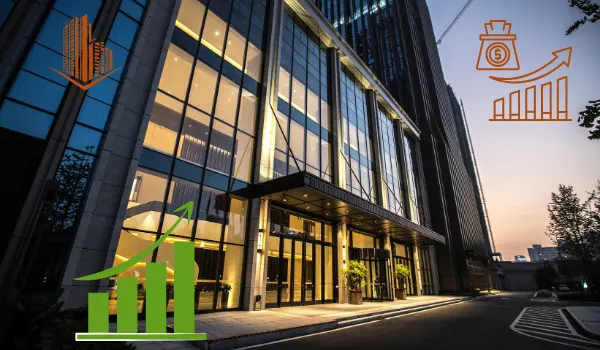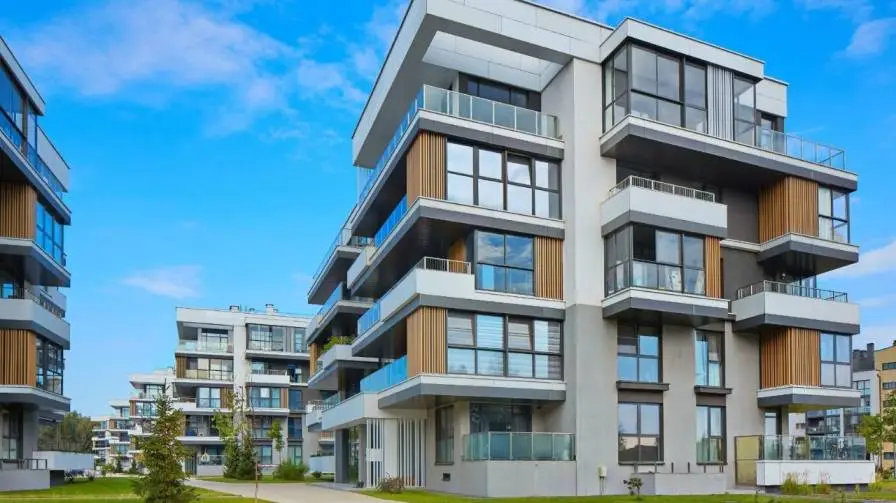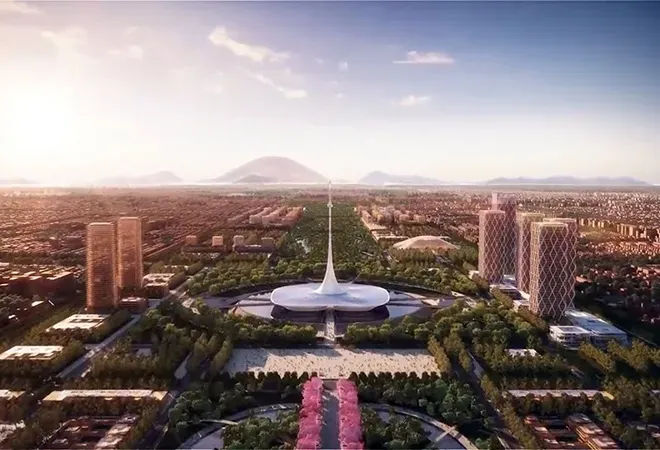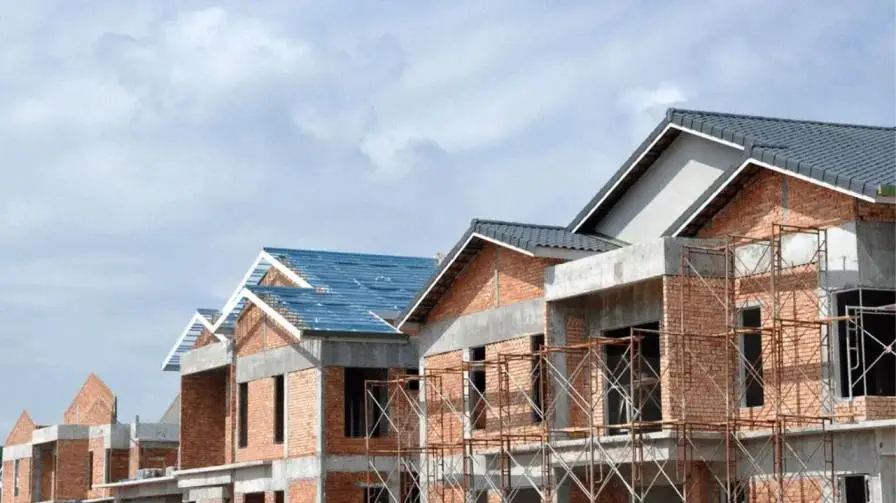Punjab’s commercial real estate market is no longer a single-note story of kirana shops and small marketplaces. This past then few years has been secretly developing into a multi- modal market Grade-A office and co-working market around Mohali/ Chandigarh, booming industrial/welrowing node development in logistics, a new retail environment created by dining and experience based F and B, and/or landscape based retail. I will take you though the trends, drivers, hotspots, risks and actionable takeaways of the investors, occupiers and developers.
Snapshot — what’s happening right now (quick view)
- Industrial & logistics: Strong demand nationally for Grade-A warehousing continues to push developers into Tier-2/Tier-3 corridors — Punjab included — supported by rising e-commerce and 3PL activity.
- Offices & co-working: India’s office leasing has recovered strongly (notably Q2 2025 volumes) and regional spillover to cities like Mohali is driving demand for modern office stock and co-working.
- Retail: Retail leasing is shifting towards F&B, entertainment and service-led uses, rather than pure traditional retail. That favours high-footfall high-streets and mixed-use developments.
The three pillars shaping Punjab’s commercial growth
A. Industrial & Warehousing (biggest structural push)
Why it is interesting: Punjab is strategic (nearest to Delhi NCR and manufacturing and agri-processing hubs to the north), is largely road networked and will have future demand of the warehouse location as a place to serve its local production needs whether logistics or cold-chain. National reports show the warehousing sector is a major growth engine — sustained occupier demand and big Grade-A additions across India.
On-the-ground in Punjab:
- Ludhiana, Jalandhar and areas around Mohali/Zirakpur are seeing more institutional developers and 3PLs evaluating land.
- Cold-chain & smaller fulfilment centres (for groceries and quick commerce) are emerging due to grocery e-commerce growth.
Implication: expect steady rental and absorption growth for logistics parks near highway nodes and rail-connected yards; speculative land buys near expressways are common.
Read also: List of Smart Cities in Punjab, India | Complete Guide
B. Office / Co-working: Mohali’s rise as a regional office hub
Mohali (SAS Nagar), with its proximity to Chandigarh and active infrastructure push, is emerging as Punjab’s commercial hub — attracting IT/ITeS, education services and local corporate HQs. Local articles and market notes highlight Mohali as the hottest micro-market in Punjab. On the national level office leasing momentum in 2024–25 reinforces this trend.
What’s changing:
- Developers are delivering Grade-A office stock and flexible co-working floors to capture expanding GCCs and domestic corporates.
- Lease structures are moving to shorter initial tenures, with more tenant improvement (fit-out) allowances.
C. Retail & F&B — experiential retail wins
Retail leasing across India has been leaning heavily into F&B and leisure. For Punjab that means:
- High-streets and malls which value dining, entertainment (salons, clinics, fitness).
- Stokesies: neighbourhood shopping enclaves with the residential development along Mohali and Zirakpur.
Hotspots within Punjab (where to look)
- Mohali / Zirakpur / Kharar — strongest commercial office and mixed-use momentum; major new projects and civic improvements.
- Ludhiana & Jalandhar belt — industrial, manufacturing support services, SME-oriented office/warehouse demand.
- Amritsar (select corridors) — retail & hospitality demand around tourism nodes and transport hubs.
- Emerging peri-urban hubs along NH-44 and expressways — attractive for logistics developers.
Drivers — why this growth is sustainable (mostly)
-
E-commerce & 3PL growth — India’s e-commerce expansion increases requirement for regional fulfilment centres and micro-warehouses. This macro tailwind is a prime driver for warehousing interest in Punjab.
-
Infrastructure & policy push — land swaps, new sector developments and local authority planning near Mohali accelerate supply of commercial land. (Local approvals and GMADA/GLADA actions are notable.)
-
Occupier diversification — domestic companies and GCCs are expanding beyond top metros, looking for cost-efficient campuses and talent pools.
-
Retail format evolution — F&B and experience-led formats command higher yields and more stable midday/evening footfall.
Risks & headwinds to watch
- Land-title and environmental clearances: Protected land designations and forest/PLPA constraints can delay projects (seen in local swaps and clearances). Due diligence is critical.
- Over-supply in speculative warehousing: national supply additions are high — location and quality of the asset will determine outperformance.
- Interest-rate / funding cycles: higher borrowing costs slow developer launches; watch RBI and credit market trends.
- Micro-market mismatch: last-mile logistics require specific dimensions (clear height, docking, power) — converting poor quality sheds to Grade-A is expensive.
Read also: New Property Law: Aadhaar And Equitable Mortgage
Investment & development playbook (practical advice)
For investors
- Target quality in logistics: prioritise Grade-A sites near expressways or last-mile hubs; avoid oversized single-user bets unless contracted.
- Short run yield vs long run appreciation: outlets in high streets which are retailing F&B would offer stable monthly rental whereas warehousing would offer institutional lease arrangements with a more extended indexation.
- De-risk by seeking up to lease or built-to-suit deals with tenants of credit.
For occupiers / corporates
- Consider Mohali for cost-effective office space with access to Chandigarh talent and improving infrastructure. Negotiate TI allowances for fit-outs.
- If supply chain dependent, secure strategically located fulfilment centers — proximity to highways and urban centres reduces last-mile costs.
For developers
- Mixed-use developments win: combine retail with upper-floor offices or small warehousing for diversified revenue.
- Design for flexibility: allow conversion between small industrial units and logistics/light industrial to ride demand cycles.
Conclusion
The commercial property market in Punjab is the shifting of fragmented local business to a structured and institutional business, based on three pillars which include logistical/warehousing market, the office development at Mohali and experiential retail. The biggest and sustainable prospects are Grade-A logistics adjacent to transportation focal points, pliable numerous office areas in Mohali/Zirakpur and edited retail (F&B+ leisure) in neighbourhoods connected with supply of new residential. The losers and the winners will be determined by quality, the location and regulatory due diligence.













